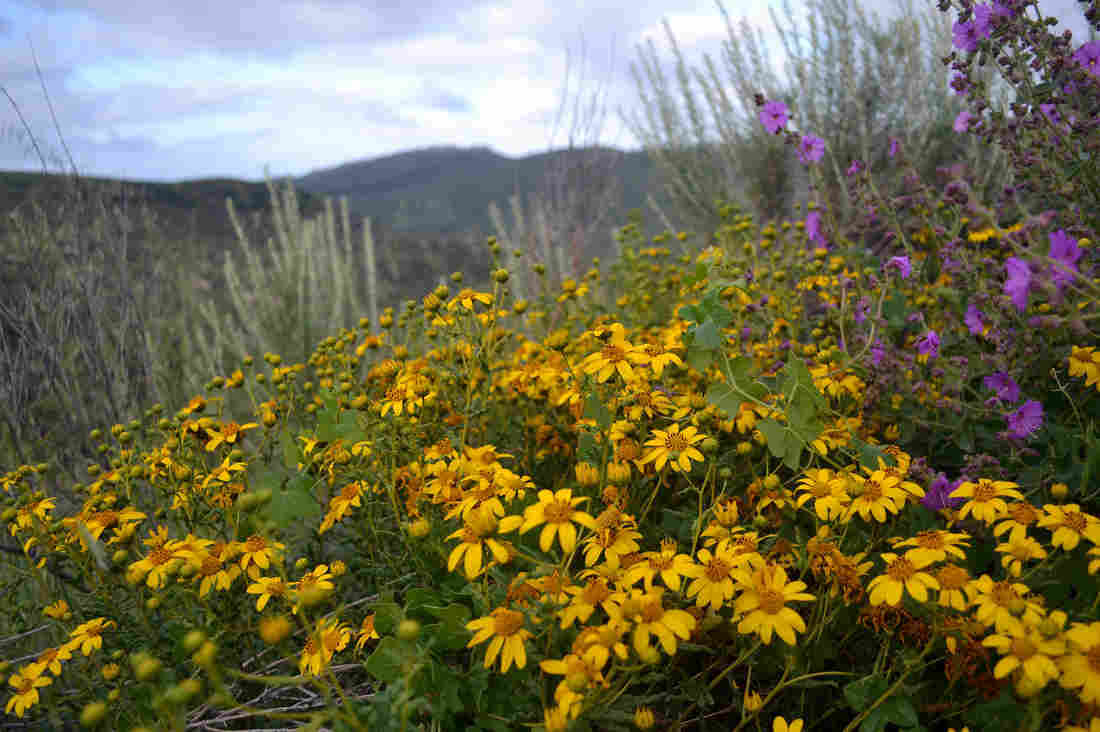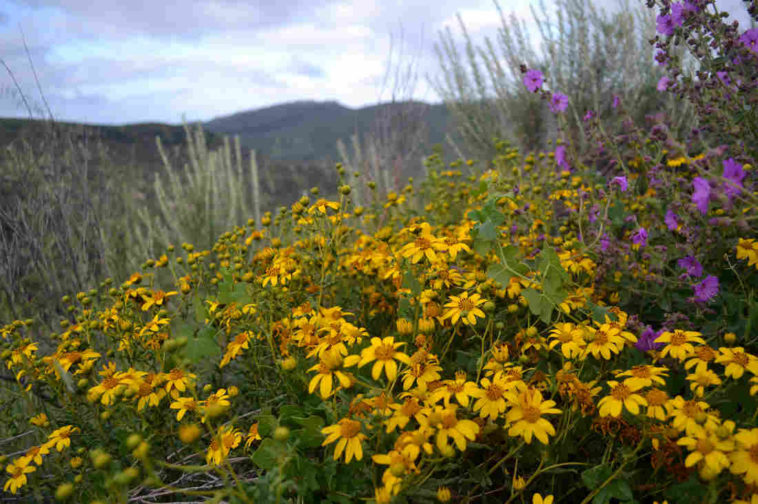Distant Cousins Of Food Crops Deserve Respect And Protection – NPR

These sunflowers in San Diego National Wildlife Refuge are wild relatives of sunflowers that farmers around the world grow to produce oil.
Lisa Cox/USFWS
Lisa Cox/USFWS
Hundreds of native North American plants, often dismissed as weeds, deserve a lot more respect, a new study argues. These plants, distant cousins of foods like cranberries and pumpkins, actually represent a precious and endangered botanical treasure.
The crops that the human race now depends on, including grains like wheat and tree fruit like peaches, originally were selected or bred from plants that grew wild hundreds or thousands of years ago. And those ancestral plants, like the small wild sunflowers that can be found across the United States, still exist. “If you see them growing along roadsides, those are the ancestors,” says Colin Khoury, a research scientists at International Center for Tropical Agriculture.
In the U.S., there are wild ancestors of blueberries, sweet potatoes, onions, potatoes, and many other food crops. Some of them are quite common. Khoury says wild lettuce plants grow along sidewalks, or in back yards, but go unrecognized. “They look nothing like lettuce,” he says. “They’re scratchy and thorny and little and ugly.”
Other crop relatives are rare and threatened. One of Khoury’s favorites is called the paradoxical sunflower. It “grows just in wetlands of the deserts of New Mexico and Texas. Little salty seeps where there’s a little bit of water beneath the soil,” he says.
Khoury loves these wild relatives of food crops, and not just for sentimental reasons. “These wild plants are valuable,” he says.
That paradoxical sunflower, for instance, can survive in a salty environment that would kill most plants. So plant breeders cross-pollinated it with commercial sunflowers and created new varieties that can grow in places where the soil contains more salt.
Other wild relatives may be hiding similarly remarkable gifts, Khoury says, such as genes that could help their domesticated relatives survive diseases, deal with pests, or adapt to disruptions in the climate.
Khoury and some of his colleagues just finished a survey of about 600 wild crop relatives that grow in North America, and published it this week in the Proceedings of the National Academy of Sciences.
They found that most of these plants are threatened from things like fires, farming and development.
The scientists argue that they deserve more protection. For one thing, “gene banks” which preserve seeds in refrigerated vaults should collect and preserve them. In addition, these plants need more protection in their natural habitat.
According to Khoury, that doesn’t necessarily mean setting aside land for them. In many cases, the plants already are growing on public land that’s managed by the U.S. Forest Service or the Bureau of Land Management.
“It’s more just being aware that these plants actually exist,” he says. “They’re not particularly on the radar of large organizations like the Forest Service.
In that regard, there’s been some progress. The Forest Service is now cataloguing wild cranberries on its land in the Southeast, as well as wild chili peppers in Arizona, along the border with Mexico.
Published at Wed, 16 Dec 2020 10:07:56 +0000





Comments
Loading…